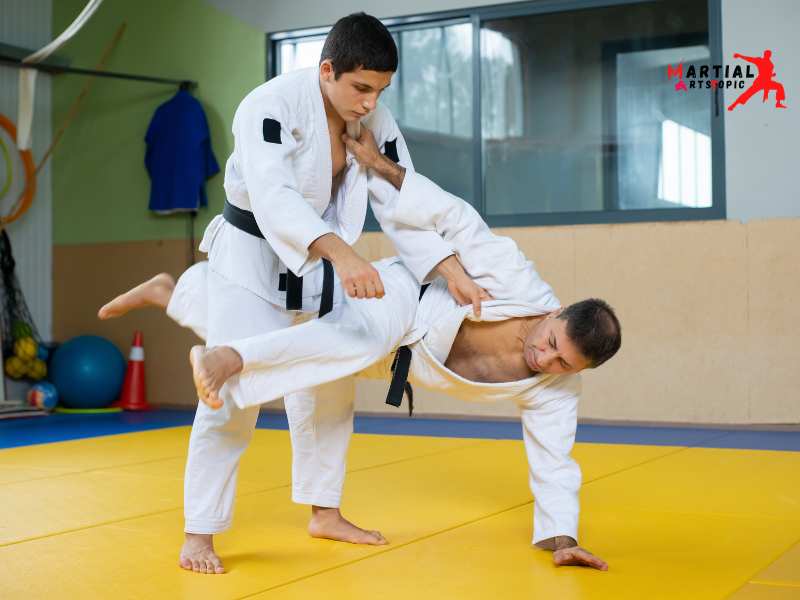
The History and Evolution of Judo Throws: From Ancient Art to Modern Sport
The History and Evolution of Judo Throws: From Ancient Art to Modern Sport Judo, a martial art and combat sport that originated in Japan, is known for its powerful throwing techniques. These throws, also known as nage-waza, are an essential aspect of Judo and play a significant role in both self-defense and competitive matches.
Ancient Roots of Judo Throws
We can trace the origins of Judo back to ancient Japan, where various forms of martial arts were practiced. One of the earliest known systems of combat in Japan was called jujitsu, which involved a combination of strikes, grappling, and throwing techniques. These ancient martial arts laid the foundation for what would eventually become judo.
Jigoro Kano and the Birth of Judo
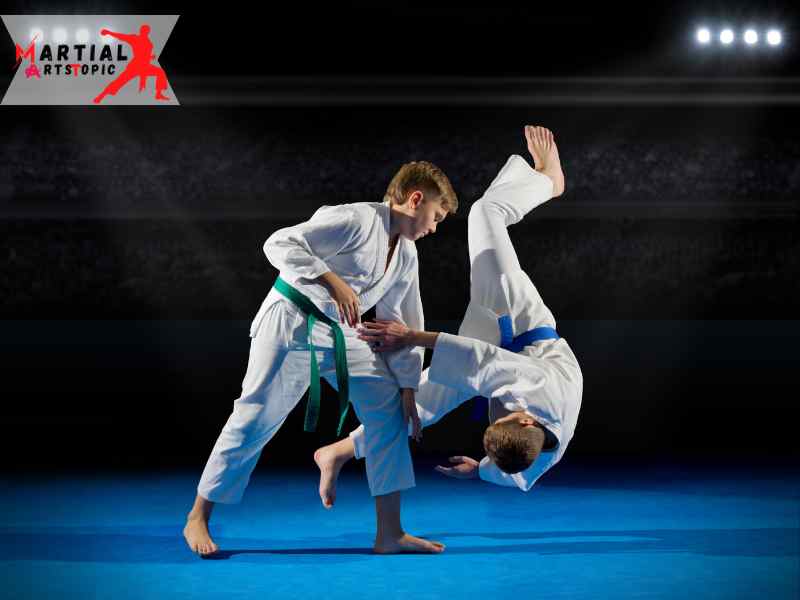
In the late 19th century, a visionary martial artist named Jigoro Kano sought to create a martial art that would emphasize physical and mental development, self-defense, and mutual respect. Drawing inspiration from the traditional jujitsu techniques, Kano founded Judo in 1882.
Kano revolutionized the art of throwing by introducing a systematic approach that focused on leverage, balance, and timing. He believed that a smaller and weaker person could overcome a larger opponent by using skillful techniques rather than brute strength. Kano’s philosophy and teachings laid the groundwork for modern Judo throws.
The Classification of Judo Throws
We can categorize judo throws into three main types: hand throws (te-waza), hip throws (koshi-waza), and foot and leg throws (ashi-waza). Each type consists of numerous techniques that vary in execution, intensity, and complexity.
Hand Throws (Te-Waza)
Hand throws involve using the hands and arms to unbalance the opponent and throw them to the ground. Some of the most popular hand throws in Judo include seoi-nage (shoulder throw), ippon seoi-nage (one-arm shoulder throw), and tai-otoshi (body drop).
Hip Throws (Koshi-Waza)
Hip throws utilize the hips and the entire body to generate power and momentum for the throw. Examples of hip throws include o-goshi (major hip throw), uki-goshi (floating hip throw), and harai-goshi (sweeping hip throw). Something often executed these throws with speed and precision, making them highly effective in competition.
Foot and Leg Throws (Ashi-Waza)
Foot and leg throws involve using the lower body to off-balance the opponent and throw them to the ground. Techniques like o-soto-gari (major outer reap), uchi-mata (inner thigh throw), and deashi-harai (forward foot sweep) fall under this category. Ashi-waza throws require proper timing and coordination to execute successfully.
The Evolution of Judo Throws
Over the years, Judo throws have strengthened alongside changes in rules, training methods, and competition formats. As Judo gained popularity worldwide, practitioners from different countries brought their unique styles and techniques to the art, further enriching its repertoire of throws.
Today, Judo throws continue to strengthen and adapt to the demands of modern sport. Judo athletes constantly push the boundaries of technique, combining traditional throws with innovative variations to gain a competitive edge. The development of grip fighting strategies and new gripping sequences has also influenced the way they executed throws in contemporary Judo.
Benefits of Learning Judo Throws
Are you looking to enhance your martial arts skills and take your training to the next level? Look no further than Judo throws! Not only are Judo throws effective self-defense techniques, but they also offer numerous physical and mental benefits.
Increased Strength and Power
Learning Judo throws requires a great deal of physical strength and power. By regularly practicing these throws, you will strengthen your entire body, particularly your core, legs, and upper body. Each throw requires precise coordination, balance, and explosive power, which builds muscle strength and enhances overall power.
Improved Flexibility and Balance
Judo throws demand flexibility and impeccable balance. As you progress in your Judo training, you will notice a significant improvement in your flexibility, as the throws require you to twist, turn, and maneuver your body in various ways. Additionally, the throws rely heavily on balance, helping you develop a sturdy base.
Enhanced Cardiovascular Fitness
Judo throws are intense and physically demanding, making them an excellent cardiovascular workout. The combination of explosive movements, quick transitions, and continuous practice will elevate your heart rate, improve your stamina, and boost your overall cardiovascular fitness.
Self-Defense Skills
One of the primary reasons people learn Judo throws is for self-defense purposes. They designed judo techniques to effectively incapacitate an opponent, giving you an advantage in a real-life self-defense situation. By learning Judo throws, you will gain the knowledge and confidence to protect yourself and others if the need arises.
Mental Discipline
Judo is not just about physical strength; it also requires mental discipline and focus. Learning Judo throws demands concentration, quick decision-making, and the ability to adapt to changing situations. Through regular practice, you will develop mental toughness, increase your self-confidence, and learn to remain calm under pressure.
Improved Coordination and Reflexes
Executing Judo throws requires precise coordination between your upper and lower body, as well as quick reflexes. As you practice and refine your techniques, your coordination and reflexes will improve significantly. These skills are not only beneficial in Judo but also in other areas of your life, such as sports, everyday movements, and even preventing accidents.
Stress Relief
Engaging in physical activities like Judo throws can be an excellent way to relieve stress. The intense workout helps release endorphins, the body’s natural feel-good hormones, which can reduce stress and improve your overall mood. Additionally, the focus required during Judo training allows you to temporarily set aside your worries and focus solely on the practice, providing a much-needed mental break.
Step-by-Step Guide to Mastering Judo Throws
If you’re passionate about martial arts and looking to enhance your skills, mastering Judo throws is an essential part of your journey. As one of the most effective techniques in Judo, throws can empower you to dominate your opponents and achieve victory on the mat. In this comprehensive step-by-step guide, we will explore the best Judo throws, equipping you with the knowledge and techniques to become a formidable force in the dojo.
Understanding the Art of Judo Throws
Before delving into specific throws, it’s crucial to understand the philosophy behind Judo throws. Derived from ancient Japanese martial arts, Judo prioritizes using an opponent’s strength and momentum against them. By mastering Judo throws, you can overcome a larger, stronger opponent through technique, balance, and timing.
Best Judo Throws for Beginners
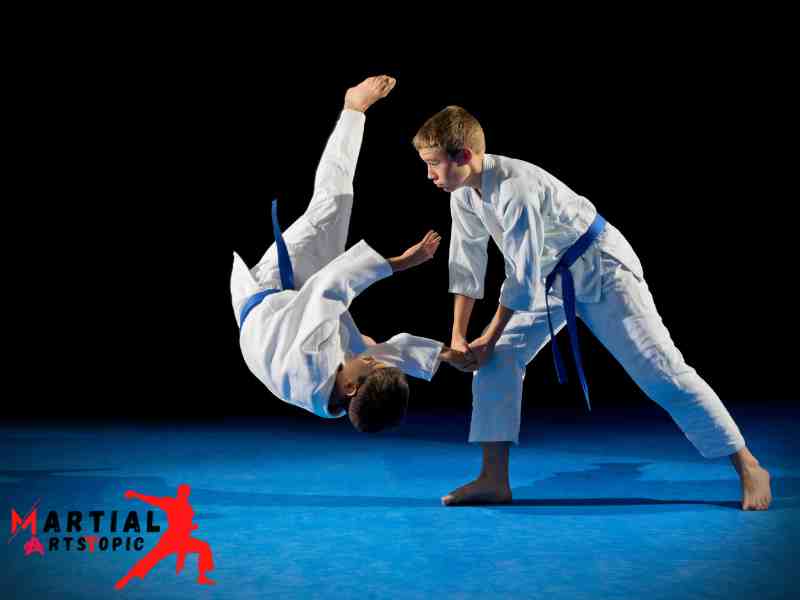
- Osotogari (Major Outer Reap): This throw involves sweeping your leg across your opponent’s leg, destabilizing their balance and sending them crashing to the mat. It’s an ideal technique for beginners to learn due to its simplicity and effectiveness.
- Seoinage (Shoulder Throw): Using the power of your hips and shoulders, this throw allows you to lift your opponent off balance and redirect their momentum over your shoulder, resulting in a forceful and impactful throw.
- Ouchigari (Major Inner Reap): This throw focuses on attacking your opponent’s inner leg, causing them to lose stability and control. Mastering this technique requires precise timing and footwork.
Intermediate Judo Throws
- Uchimata (Inner Thigh Throw): This throw requires a higher level of skill and timing. By lifting your opponent’s inner thigh with a sweeping motion, you can unbalance them and execute a powerful throw.
- Harai Goshi (Sweeping Hip Throw): Combining speed and leverage, this throw relies on hip rotation to sweep your opponent’s leg and take them down. It’s crucial to maintain a powerful grip and precise timing for a successful execution.
- Tai Otoshi (Body Drop): Using your body weight and leg positioning, this throw involves dropping your body under your opponent while pulling them forward, causing them to lose balance and fall.
Advanced Judo Throws
- Uchi Mata Sukashi (Inner Thigh Throw Countering): This technique focuses on countering your opponent’s attack by swiftly reaping their inner thigh while maintaining your balance. It requires exceptional timing and anticipation.
- Sode Tsuri Komi Goshi (Sleeve Lifting Pulling Hip Throw): a quick and explosive pulling motion to lift your opponent over the hip characterizes this throw. It demands precise coordination and upper body strength.
- Tomoe Nage (Circular Throw): In this throw, you use your legs to propel your opponent over your head, creating a circular motion. It requires excellent timing and control to execute effectively.
Best Judo Throws: Techniques and Variations
Best Judo Throws: Techniques and Variations Judo, a martial art and combat sport originating from Japan, is renowned for its throws and takedowns. These techniques require a combination of skill, precision, and timing. In this article, we will explore some of the best Judo throws, along with their variations, that can be used to gain the upper hand in a Judo match. So, let’s dive in and discover the most effective Judo throws!
Seoi Nage (Shoulder Throw)
Seoi Nage is one of the most popular and widely used Judo throws. It involves using your shoulder to lift and throw your opponent over your back. This technique requires a powerful grip, proper footwork, and a quick rotation to generate maximum power.
Variations
- Ippon Seoi Nage: In this variation, you aim to throw your opponent with one clean and powerful movement.
- Morote Seoi Nage: Here, you use both hands to grip your opponent’s collar before executing the throw.
O Soto Gari (Major Outer Reap)
O Soto Gari is a classic Judo throw that involves sweeping your opponent’s leg and causing them to fall backward. This technique requires good timing and a strong leg sweep to effectively off-balance your opponent.
Variations
- Kouchi Gari: Instead of sweeping the leg from the outside, you sweep it from the inside, causing your opponent to lose their balance.
- O Uchi Gari: This variation involves sweeping the leg from the inside, similar to Kouchi Gari, but with a different foot placement.
Uchi Mata (Inner Thigh Throw)
Uchi Mata is a powerful Judo throw that utilizes your inner thigh to lift and throw your opponent. This technique requires excellent hip control and timing to execute successfully.
Variations
- Harai Goshi: Instead of lifting your opponent with your inner thigh, you sweep their leg with your hip, causing them to fall backward.
- O Goshi: This variation involves using a hip toss motion to throw your opponent over your back.
Tai Otoshi (Body Drop)
Tai Otoshi is a quick and explosive Judo throw that involves dropping your body weight onto your opponent to throw them. This technique requires precise timing and a sudden drop of your body weight to catch your opponent off guard.
Variations
- Kata Guruma: Instead of dropping your body weight onto your opponent, you lift them onto your shoulders and throw them.
- Hane Goshi: This variation combines the hip toss motion of O Goshi with the body drop of Tai Otoshi, creating a powerful throwing technique.
Osoto Otoshi (Major Outer Drop)
Osoto Otoshi is a dynamic Judo throw that involves using your leg to sweep your opponent’s leg while pulling them backward, causing them to fall. This technique requires good timing, footwork, and a strong sweeping motion to off-balance your opponent.
Variations
- Osoto Gari: Instead of sweeping your opponent’s leg, you reap it from the outside, causing them to lose their balance.
- Osoto Guruma: This variation involves using a wheeling motion to throw your opponent over your back.
Training Tips for Mastering Judo Throws
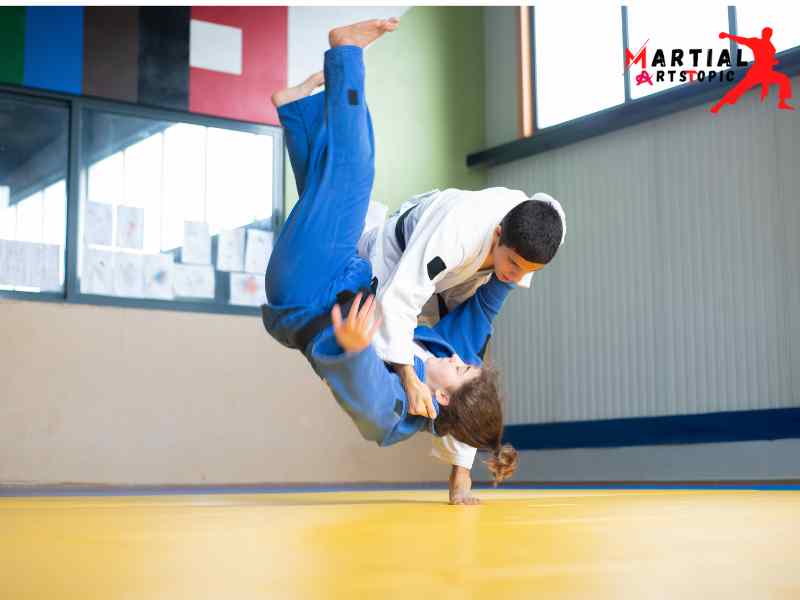
Best Judo Throws: The Secrets to Perfecting Your Technique Are you looking to take your Judo skills to the next level? Do you want to become a master of Judo throws? Well, you’ve come to the right place! The best Judo throws and provide valuable training tips to help you perfect your technique.
Judo is a martial art that focuses on using an opponent’s strength and momentum against them. It requires precision, timing, and technique. So, let’s dive into the world of Judo throws and discover some of the most effective ones that will make you a force to be reckoned with on the mat.
- Osoto Gari (Major Outer Reaping): This throw involves sweeping your opponent’s leg with a powerful outward motion. To execute this throw successfully, it’s crucial to maintain a firm grip on your opponent’s upper body while simultaneously driving your weight and momentum through your hips.
- Seoi Nage (Shoulder Throw): As one of the most popular Judo throws, Seoi Nage requires excellent timing and coordination. It involves using your opponent’s momentum to throw them over your shoulder. Mastering this throw requires a fluid motion and a strong connection with your opponent’s upper body.
- Uchi Mata (Inner Thigh Throw): This throw showcases the importance of hip movement in Judo. By using a sweeping motion with your inner thigh, you can efficiently off-balance your opponent and throw them to the ground. It’s crucial to have excellent control of your opponent’s upper body and maintain a firm grip throughout the execution.
- Harai Goshi (Sweeping Hip): This throw requires precise timing and a strong hip rotation. By sweeping your opponent’s leg with your hip, you can create a powerful off-balancing effect and execute a successful throw. Remember to maintain a powerful grip on your opponent’s upper body to control the throw.
- O Goshi (Major Hip Throw): This throw utilizes the power of your hips to generate a forceful throw. By pulling your opponent towards you and rotating your hip, you can effectively lift and throw them over your hip. It’s essential to maintain a powerful grip and keep your stance balanced to execute this throw correctly.
Now that we’ve covered some of the best Judo throws let’s explore a few training tips to help you master them:
- Focus on proper technique: Judo throws rely heavily on technique rather than strength alone. Take the time to understand the mechanics of each throw and practice them with precision.
- Develop core strength: A strong core is essential for executing Judo throws effectively. Incorporate exercises such as planks, Russian twists, and medicine ball throws into your training routine to strengthen your core muscles.
- Work on flexibility: Flexibility plays a significant role in Judo throws. Incorporate stretching exercises, such as dynamic warm-ups and static stretches, to improve your range of motion and prevent injuries.
- Drill, drill, drill: Repetition is key to mastering Judo throws. Dedicate specific training sessions to drilling each throw repeatedly, focusing on the finer details of the technique.
- Practice with different partners: Training with a variety of partners will expose you to different body types, strengths, and techniques. This diversity will enhance your adaptability and make you more proficient in executing Judo throws.
Remember, mastering Judo throws takes time, patience, and dedication. Keep practicing, seek guidance from experienced instructors, and most importantly, enjoy the journey of becoming a master of Judo throws. Incorporate these training tips into your routine, and soon you’ll be executing flawless Judo throws that will leave your opponents in awe. Best of luck on your Judo journey!
Top 10 Judo Throws
Judo, a modern martial art originating from Japan, is renowned for its powerful and effective throwing techniques. These throws, or Nage-waza, embody the essence of Judo and have become the foundation of this dynamic combat sport. In this blog post, we will delve into the world of Judo throws and unveil the top 10 techniques that every Judo practitioner should strive to master. From foot sweeps to hip throws, get ready to witness the artistry and finesse behind the best Judo throws!
1. Osoto Gari (Major Outer Reaping)
Osoto Gari is one of the most effective Judo throws, where the attacker uses a sweeping motion to reap their opponent’s leg backward while maintaining control of their upper body. This throw is particularly useful against opponents with a strong defensive posture, allowing the attacker to create an opening and swiftly take them down.
2. Uchi Mata (Inner Thigh Throw)
Uchi Mata is a visually impressive Judo throw that involves lifting the opponent’s inner thigh and using the attacker’s hip to topple them over. This throw requires excellent timing, balance, and coordination, making it a favorite among Judo practitioners who enjoy the artistry of the sport.
3. Harai Goshi (Sweeping Hip Throw)
Harai Goshi is a powerful Judo throw where the attacker uses their hip to sweep the opponent’s leg forward while maintaining control of their upper body. This throw requires precise timing and proper hip movement to generate maximum force, making it a valuable technique for both self-defense and competitive Judo.
4. Seoi Nage (Shoulder Throw)
Seoi Nage is a fundamental Judo throw that involves using the attacker’s shoulder as a pivot point to throw the opponent over their back. This throw requires a combination of upper body strength, balance, and speed. It is a versatile technique that can be executed from various grips, making it an essential tool in a Judoka’s arsenal.
5. Tai Otoshi (Body Drop)
Tai Otoshi is a dynamic Judo throw where the attacker uses their body to drop down and pull the opponent towards them, causing them to lose balance and fall. This throw requires precise timing, footwork, and an understanding of the opponent’s center of gravity. Tai Otoshi is an excellent choice when the attacker needs to quickly change the momentum of a match.
6. Ouchi Gari (Major Inner Reaping)
Ouchi Gari is a Judo throw that involves reaping the opponent’s inner leg while maintaining control of their upper body, causing them to lose balance and fall backward. They often used this throw as a setup for other Judo techniques, making it a crucial part of a Judoka’s repertoire.
7. Koshi Guruma (Hip Wheel)
Koshi Guruma is a Judo throw where the attacker uses their hip as a pivot point to throw the opponent over their shoulder. This throw requires precise timing, hip movement, and upper body strength. Koshi Guruma is particularly effective when executed with speed and power, making it a favorite among Judo competitors.
8. Ko Uchi Gari (Minor Inner Reaping)
Ko Uchi Gari is a swift Judo throw where the attacker reaps the opponent’s inner leg, causing them to lose balance and fall backward. They often use this throw as a surprise attack, taking advantage of the opponent’s momentary lapse in concentration. Ko Uchi Gari requires precise timing and footwork, making it an excellent technique to catch opponents off guard.
9. Deashi Harai (Forward Foot Sweep)
Deashi Harai is a Judo throw that involves sweeping the opponent’s front leg forward, causing them to lose balance and fall. This throw requires quick reflexes, coordination, and proper foot placement. Deashi Harai is a versatile technique that can be executed from various grips and positions, making it a valuable tool in a Judoka’s repertoire.
10. Tomoe Nage (Circle Throw)
Tomoe Nage is an advanced Judo throw where the attacker uses their leg as a lever to throw the opponent over their head. This throw requires excellent timing, flexibility, and control. Tomoe Nage is a visually spectacular technique that showcases the dynamic nature of Judo, making it a favorite among advanced practitioners and spectators alike.
From Beginner to Black Belt: Progressing in Judo Throws
From Beginner to Black Belt: Progressing in Judo Throws Are you ready to take your Judo throws to the next level? Whether you’re a beginner looking to learn the basics or a seasoned practitioner aiming to master the art of throwing, this guide will take you through the journey of progressing in Judo throws.
O-Soto-Gari (Major Outer Reaping)
Let’s start with one of the most powerful and effective Judo throws – O-Soto-Gari. This throw involves using your leg to reap your opponent’s leg out from under them, causing them to lose balance and fall to the ground. O-Soto-Gari can be executed from various grips and positions, making it a versatile technique suitable for beginners and advanced practitioners alike.
Uchi-Mata (Inner Thigh Throw)
Another highly effective Judo throw is Uchi-Mata. This throw involves lifting your opponent’s inner thigh with your leg and throwing them over your hip. Uchi-Mata requires proper timing and hip rotation to generate maximum power. As you progress in your Judo journey, mastering Uchi-Mata will become a significant milestone.
Seoi-Nage (Shoulder Throw)
Seoi-Nage, also known as the shoulder throw, is a classic Judo throw that requires excellent upper body strength and coordination. This throw involves gripping your opponent’s collar or sleeve, rotating your body, and using your shoulder as a pivot point to throw them over your back. Seoi-Nage can be executed in various ways, including the traditional over-the-shoulder technique or a modified version that involves a hip entry.
Harai-Goshi (Sweeping Hip Throw)
Harai-Goshi is a Judo throw that utilizes a sweeping motion of the hip to unbalance and throw your opponent. This technique involves stepping in and across your opponent’s body, sweeping their leg with your hip, and using your arm to guide them over your hip. Harai-Goshi requires precise timing, hip movement, and control to execute effectively.
Osoto-Guruma (Major Outer Wheel)
As you advance in your Judo journey, Osoto-Guruma becomes a throw worth mastering. This throw is similar to O-Soto-Gari but involves a wheeling motion to throw your opponent. Osoto-Guruma requires a combination of leg reaping and circular motion to unbalance and throw your opponent to the ground.
These are just a few of the best Judo throws that can take you from a beginner to a black belt. Remember, mastering Judo throws requires consistent practice, dedication, and guidance from experienced instructors. As you progress, focus on refining your technique, understanding the principles behind each throw, and developing your timing and coordination.
In addition to practicing the throws mentioned above, it’s crucial to work on your overall Judo skills, including grip fighting, footwork, and mat awareness. Judo is a dynamic martial art that requires a holistic approach to become a well-rounded practitioner.
So, whether you’re just starting your Judo journey or aiming to reach the coveted black belt, remember to embrace progressing in Judo throws. With time, patience, and a commitment to continuous improvement, you’ll be executing these throws with precision and confidence. Keep practicing, stay dedicated, and enjoy the rewarding journey of becoming a black belt in Judo.
Remember, the road from a beginner to a black belt is difficult, but the rewards are worth it. Start your journey today and unlock the power of Judo throws!
Improving Your Judo Throws: Tips from the Pros
Improving Your Judo Throws: Tips from the Pros Judo is a martial art that emphasizes throws and grappling techniques to subdue opponents. It requires a combination of skill, technique, and strength to execute successful throws. Whether you’re a beginner or an experienced judoka, there’s always room for improvement when it comes to your throws.
Master the Fundamentals
The foundation of any successful judo throw lies in mastering the fundamentals. This means understanding the proper footwork, balance, and grip. Take the time to practice basic throws like Osoto Gari, Ouchi Gari, and Seoi Nage until they become second nature. By perfecting these fundamental throws, you’ll develop a solid base upon which to build more complex techniques.
Focus on Timing
Timing is everything in judo. To execute a throw successfully, you must anticipate your opponent’s movements and strike at the right moment. Pay attention to their balance and use it to your advantage. A well-timed throw can catch your opponent off guard and give you a significant advantage in the match.
Use Your Hips
The power behind a judo throw comes from your hips. By engaging your hips and generating rotational force, you can transfer that power into your throws. Practice hip movement exercises and drills to strengthen this area and improve your throwing ability.
Develop Strong Grips
Having a powerful grip is essential in judo. It allows you to control your opponent and set up your throws effectively. Work on strengthening your grip by performing exercises such as pull-ups, deadlifts, and grip training devices. Additionally, practice different gripping strategies to adapt to various opponents and situations.
Be Agile and Flexible
Judo throws require agility and flexibility. Incorporate exercises that improve your range of motion and overall flexibility into your training routine. Stretching before and after each session can help prevent injuries and enhance your throwing techniques.
Study Your Opponents
To improve your judo throws, it’s crucial to study your opponents. Pay attention to their tendencies, weaknesses, and preferred techniques. By understanding their style, you can develop counter throws and strategies to exploit their vulnerabilities.
Train with Experienced Judokas
One of the best ways to improve your judo throws is to train with experienced judokas. Their knowledge and expertise can provide valuable insights and help you refine your techniques. Seek out opportunities to train with higher-level practitioners and learn from their expertise.
Visualize Success
Visualization is a powerful tool in improving your judo throws. Before each training session or competition, take a moment to visualize yourself executing flawless throws. Imagine the feeling of success and the techniques flowing effortlessly. This mental preparation can enhance your focus and confidence when it’s time to perform.
Judo Throws for Self-Defense: Techniques to Keep You Safe
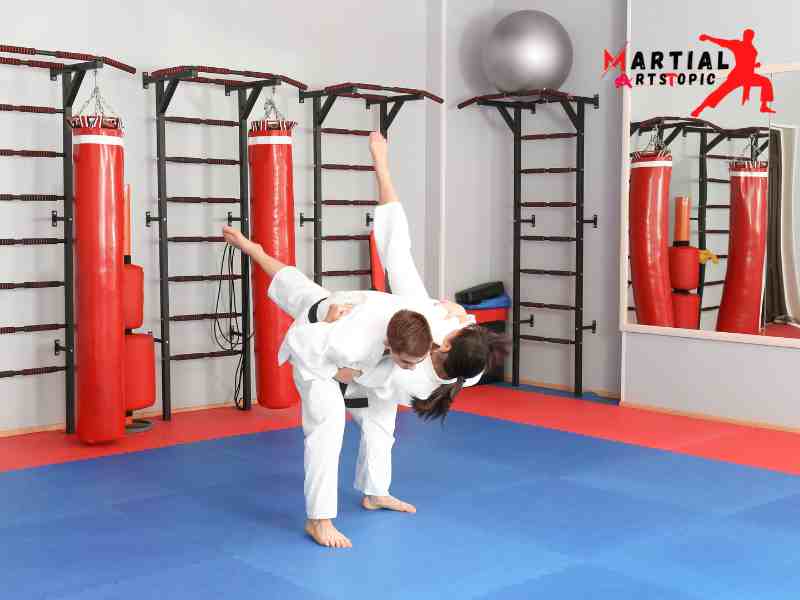
Best Judo Throws for Self-Defense: Techniques to Keep You Safe When it comes to self-defense, having a well-rounded set of skills is essential. While there are various martial arts disciplines to choose from, Judo stands out as a practical and effective option. Known for its throws and grappling techniques, Judo provides individuals with the ability to defend themselves in real-life situations.
Osoto Gari (Major Outer Reaping)
Osoto Gari is one of the most powerful throws in Judo. This technique involves using your leg to sweep your opponent’s leg and throw them off balance. By breaking their posture, you create an opportunity to escape or neutralize the threat. Osoto Gari is particularly useful when dealing with larger or stronger opponents.
Ouchi Gari (Major Inner Reaping)
Similar to Osoto Gari, Ouchi Gari focuses on off-balancing your opponent. However, instead of using your leg to sweep, you use it to hook behind your opponent’s leg and bring them down. Ouchi Gari is a versatile throw that can be effectively used in various self-defense scenarios.
Seoi Nage (Shoulder Throw)
Seoi Nage is a classic Judo throw that involves using your shoulder as a pivot point to throw your opponent over your back. This technique requires timing and proper execution to be successful. Seoi Nage is particularly effective when faced with an aggressive attacker charging towards you.
Harai Goshi (Sweeping Hip Throw)
Harai Goshi is a throw that utilizes the hip as the point of contact to throw your opponent. By sweeping their leg with your hip, you can create a moment of vulnerability for the attacker. This throw is effective when dealing with opponents who are grabbing or attempting to bear-hug you.
Uchi Mata (Inner Thigh Throw)
Uchi Mata is a dynamic throw that involves lifting your opponent onto your thigh and throwing them off balance. This technique requires proper timing and coordination to execute effectively. Uchi Mata is particularly useful against opponents who are taller or have a height advantage.
Tai Otoshi (Body Drop)
Tai Otoshi is a throw that involves dropping your body weight onto your opponent to take them to the ground. By controlling their upper body and using your own momentum, you can effectively neutralize the threat. Tai Otoshi is a versatile technique that can be used in various self-defense situations.
Incorporating Judo throws into your self-defense repertoire can greatly enhance your ability to protect yourself in real-life situations. However, it is important to remember that practice and proper training are crucial to mastering these techniques. Attending a reputable Judo school or training under a qualified instructor will ensure that you learn these throws correctly and safely.
In conclusion
Best Judo throws play a crucial role in the success of any judoka. From the dynamic and explosive hip throws to the precise and technical foot sweeps, each technique requires skill, timing, and practice. The best judo throws are not only effective in gaining points or securing a win but also in showcasing the beauty and essence of the sport. By mastering these throws, judokas can confidently approach their opponents, knowing that they possess a diverse arsenal of techniques to rely on. Whether you are a beginner or an advanced practitioner, incorporating these throws into your training can elevate your judo game and help you achieve new levels of success. So, keep practicing, refining your techniques, and striving to perfect those best judo throws.
